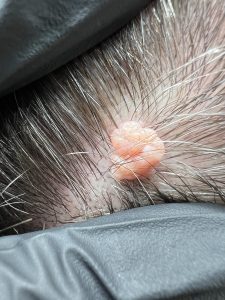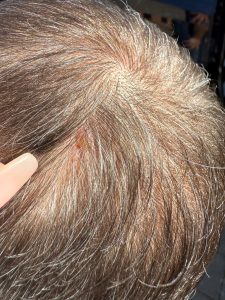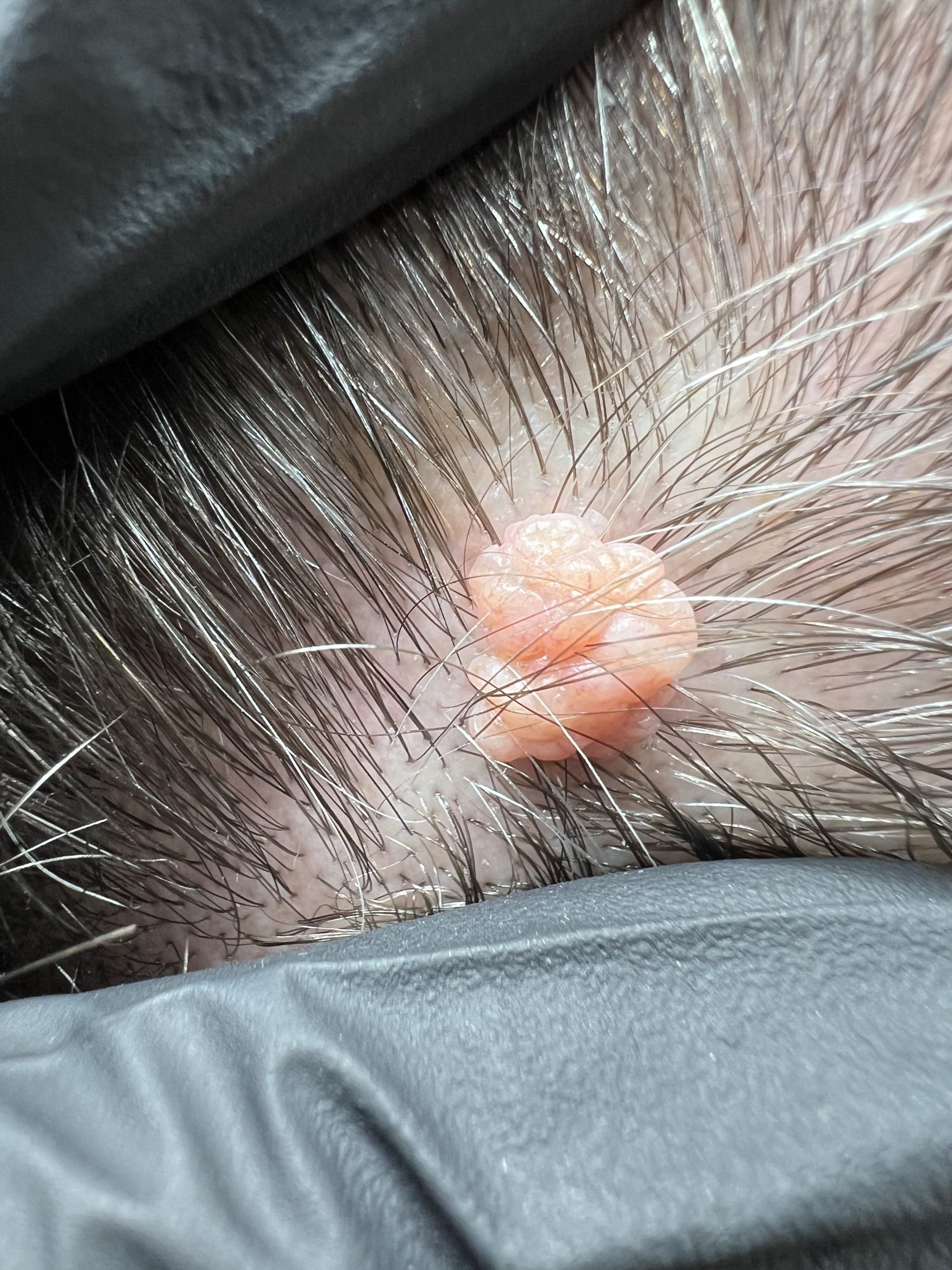Treating a Longstanding Intradermal Nevus on the Scalp
Recently, a gentleman came to see me with an Intradermal Neavus on the scalp—an intradermal nevus he’d had for nearly 20 years. It had been checked by the doctor and dermatology and although harmless, it had started to cause a bit of bother. Every trip to the hairdresser meant it risked being nicked or caught with the clippers, leaving it irritated and sometimes sore. That was the final nudge he needed to come in for treatment.
Intradermal nevi are benign growths—essentially, a type of mole that sits just under the surface of the skin. They’re common and nothing to be alarmed about, but when they’re in a spot like the scalp, where there’s regular friction or grooming, they can become more of a nuisance more than anything else.
Treatment for these is simple and straightforward. After assessing the area and confirming there were no signs of concern (which, in this case, there weren’t), we proceeded with reduction. The procedure was quick, and healing is usually smooth with minimal aftercare needed. in this case the after picture below is only 2 weeks post treatment so you can see how quickly things can heal.



I see these types of Intradermal Neavus on the scalp frequently in both men and women. Often, people have lived with them for years, sometimes decades, before deciding enough is enough—usually when they start catching or other people have started to notice as if on the back of the head you may only be able to feel it yourself and not see it.
What’s most rewarding is seeing the relief clients feel afterward. It’s such a small thing, but removing that one annoying bump can make day-to-day life just a little easier.
If you’ve got a mole or bump that’s not causing any harm but is getting in the way, particularly on the scalp or in high-friction areas, it’s worth knowing that safe, effective treatment is available—and often simpler than you’d expect.
If you think you may have an Intradermal Neavus then Book Now for a consultation in my Colchester or Chelmsford Clinic Click HERE

